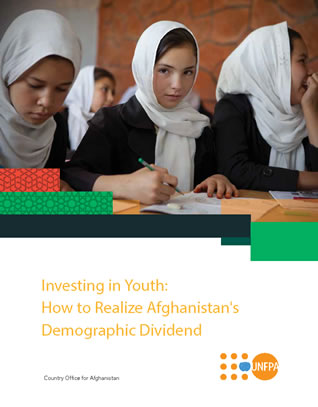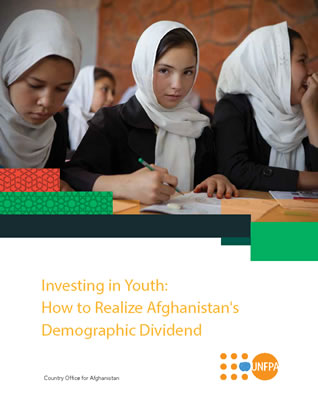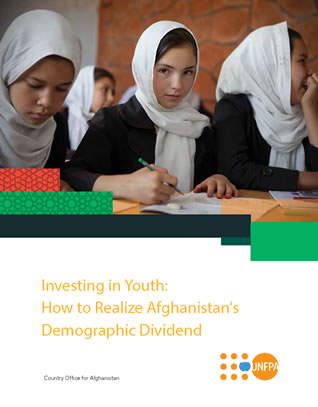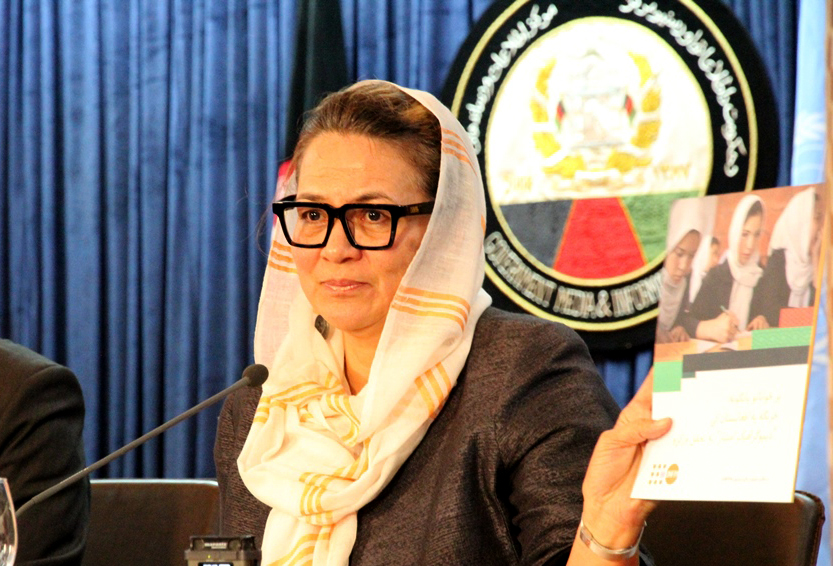
|

|

|
| English - انګلش | Dari - دری | Pashto - پښتو |
Kabul, August 09, 2015 - The Deputy Ministry of Youth Affairs and UNFPA - the United Nations Population Fund launched today the publication Investing in Youth: How to realize Afghanistan's Demographic Dividend.
The publication illustrates a changing population age structure and emerging youth bulge, during the upcoming Afghanistan's transformation decade, based on population projections from census, socio-demographic and household survey data. To reap the economic benefits of the Afghanistan's demographic transition and bonus, the country must invest in youth. With 63 percent of the population below 25 years old, Afghanistan has one of the youngest populations in the world.

"Young people form the backbone of a country. When they are empowered sufficiently, the country will be more self-reliant", said H.E. Abdul Bari Jahani, Minister of Information and Culture. "And therefore the young generation needs to be guided towards the right direction by providing them a safe environment and suitable resources."
The paper was launched in the presence of high-level officials from the Government of the Islamic Republic of Afghanistan including the Ministries of Information and Culture, Economy and Labor, Social Affairs, Martyrs and Disabled.
"The demographic dividend provides a window of opportunity for Afghanistan to accelerate socio-economic development", said Dr Annette Sachs Robertson, UNFPA Representative. "Today we have the opportunity to invest in our youth, particularly in girls, to ensure they are productively integrated in the society and achieve their full potential."
Investing in Youth: How to Realize Afghanistan's Demographic Dividend, highlights three vital areas of intervention to promote the country's future development: women empowerment, education and employment.
Women's
empowerment is critical, especially in countries where birth rates remain high, such as Afghanistan. Adolescent policies and programmes must help girls to stay in school, providing social and economic alternatives to early marriage and childbearing, enabling them to reach their full potential. Fertility rates in Afghanistan have decreased from 6.3 in 2005 to 5.1 in 2015. The use of family planning methods has also increased: currently 20 percent of married women use a modern contraceptive method. Lowered fertility rates through voluntary family planning are linked to women's empowerment and increases in women's labour-force participation and earnings, contributing to the country's economy. It also enhances the life-chances of their children and their education, helping to break the intergenerational cycle of poverty.

Investment in education, especially girls' education, is highlighted in the report: Afghanistan will need to expand high-quality secondary schooling, technical training and skills development, to ensure that the high proportion of young people can contribute to Afghanistan's economic progress. Public policy is critical to the level and quality of education and the readiness of working youth, but apprenticeships, on-the-job skills development and entrepreneurship, also involving the private sector, can facilitate the right capabilities are matched to job opportunities.
Finally, the report recommends an investment in employment opportunities for young people so they can be productively integrated in the society and into labour force and contribute to economic progress, peace and stability.
Investing in Youth: How to Realize Afghanistan's Demographic Dividend further analyses the recommendations of the Afghanistan State of Youth Report 2014 aiming at contributing to the current national dialogue and effort lead by the Deputy Ministry of Youth Affairs to place the youth at the center of the political agenda.


